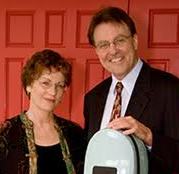|
Chamber
FRISSON DELIVERS SHIVERS OF DELIGHT
by Abby Wasserman
Sunday, March 30, 2025
Chamber
THE PARKER CAPTURES DEMANDING ADES QUARTET AT RAC SEBASTOPOL CONCERT
by Peter Lert
Saturday, February 15, 2025
Chamber
SPLENDID ECHOES ACROSS THE BAY
by Abby Wasserman
Sunday, February 9, 2025
ETHEREAL DUO IN WEILL HALL RECITAL
by Pamela Hicks Gailey
Thursday, February 6, 2025
ESPANA SEGURO AT SO CO PHIL'S JACKSON THEATER CONCERT
by Terry McNeill
Sunday, February 2, 2025
Choral and Vocal
MASTERFUL SINGING CLASS IN SCHROEDER HALL
by Pamela Hicks Gailey
Sunday, February 2, 2025
Recital
MUSICAL POT POURRI AT SPRING LAKE VILLAGE RECITAL
by Terry McNeill
Friday, January 31, 2025
CELLO AND CLARINET HIGHLIGHT TRIO NAVARRO'S CONCERT
by Ron Teplitz
Sunday, January 26, 2025
SONGS OF LOVE, IN A WARM TRIO
by Pamela Hicks Gailey
Sunday, January 26, 2025
Symphony
EARTHLY PLEASURES AT THE VALLEJO SYMPHONY
by Peter Lert
Sunday, January 19, 2025
|
 |
 The Stauffer Duo |
STAUFFER DUO LAUNCHES SRJC SEASON WITH GENTLE CHARM
by Terry McNeill
Sunday, September 19, 2010
Old friends returned Sept. 19 as the Stauffer Duo, long associated with the Santa Rosa Junior College Chamber Series, return for their 30th anniversary recital in Newman Auditorium. It was the first of the season’s six concerts, with a lively 177 in attendance and the anticipation of a challenging program including two modern works and some solo pianism from a mostly unknown composer.
Currently emeritus professors at San Diego State University, cellist Thomas Stauffer and pianist Cynthia Darby have strong ties to the North Bay, as Mr. Stauffer was for many years with the Santa Rosa Symphony and Ms. Darby was born in Ukiah, studying with local teachers prior to matriculating to Boston.
Mr. Stauffer’s cello playing is studied and professional but difficult for a listener to easily approach. This was initially evident in the opening work, Beethoven’s G Minor Sonata, Op. 5, No. 2. The performance was suave with fastidious attention to detail, the bowing often on open strings and understated in the long introductory section. The piano frequently covered the string line, making the cellist visible but not audible. But Beethoven wrote a virtuoso part for himself in the 1796 work, and more is frequently happening in the accompaniment than with the cello. The mixture of quick turns in the piano part in Rondo Allegro brought the composer’s humor to the forefront, the Duo’s attention to small effects telling.
Joan Tower’s slower than slow Tres Lent spotlighted Mr. Stauffer’s varied vibrato technique, and his ability to make the subtlety of pitch alteration grow and diminish. This is a work of lament, episodic for the cello with deft downward phrasing and small portimenti. I found it quite moving.
The first half ended with three rare solo piano works by Séverac, a composer that I don’t recall ever listed on a piano recital program. The inspiration was from the composer’s native Languedoc region of France, now known for its bourgeois wines but in the early 1900s a bucolic area of wild nature. Ms. Darby brought these outdoor sounds quickly to bear with elegant pianism. These pieces are not easily known, as each begins in a wandering way and following many lovely side ventures arrives at shimmering endings, soft arpeggios fading into treble-area iridescence. In their way and with Ms. Darby’s artistic fingers (and feet) they were captivating, but not altogether convincing.
The second part contained two works, a short Messiaen threnody for cello and piano and the big Brahms E Minor Sonata, Op. 38. Here the best and the least effective parts of Mr. Stauffer’s artistry were heard. The Messiaen is the fifth of the eight movement Quatuor Pour La Fin Du Temps, from 1941, titled “Praise to the Eternity of Jesus.” Here Mr. Stauffer was in his element, leaning into some notes, playing others without vibrato, juxtaposing some of the less-than-jarring dissonances in the piano and Ms. Darby’s exquisite control of diminuendo passages. The cello note at the end, over an ostinato passage in the piano, is a long fermata and worth every second of time. Long seconds indeed and wholly mesmerizing.
Brahms’ E Minor Sonata (Op. 38) concluded the printed program, a somber and mystical composition reflecting “homage to Bach” in three big movements, and finishing with a fugue and provocative modulation to G Major. Here I was expecting the piano to again cover the cello, but the balances were initially good and the noble opening theme sounded forth with fervent intensity. The warm second theme was underplayed by Mr. Stauffer, as throughout the recital he tended to need more sonic projection and instrumental passion. His style tends more towards a Fournier sound than one of DuPre, Rostropovich or the flamboyant Piatigorsky. It wasn’t a bass-heavy Brahms reading, the last Piu Presto coda of the Allegro finding the cello lost in the piano sound. Ms. Darby is an articulate pianist, clean and without score variance or inner voicing, but even her non-heroic Brahms sound easily veiled Mr. Stauffer’s elegant but small-scaled tones.
One encore was offered to a standing ovation, the long slow movement from Brahms’ F Major Sonata, Op. 99. Here again the performance of the Adagio Affettuoso was beguiling but not sonorous, the pizzicato exposition played with refinement and for once with heft.
Hosted by the Series Committee, a posh reception in the Bertolini Student Center followed the concert and honored retired SRJC faculty member Norma Brown.
|
